
Murom. Savior Monastery. Cathedral of the Transfiguration, southwest view. Left: Bell tower & Intercession Church. August 16, 2012
William BrumfieldAt the beginning of the 20th century, Russian chemist and photographer Sergey Prokudin-Gorsky developed a complex process for vivid, detailed color photography. His vision of photography as a form of education and enlightenment was demonstrated with special clarity through his photographs of medieval architecture in historic settlements northeast of Moscow such as Vladimir, which he visited in the Summer of 1911.
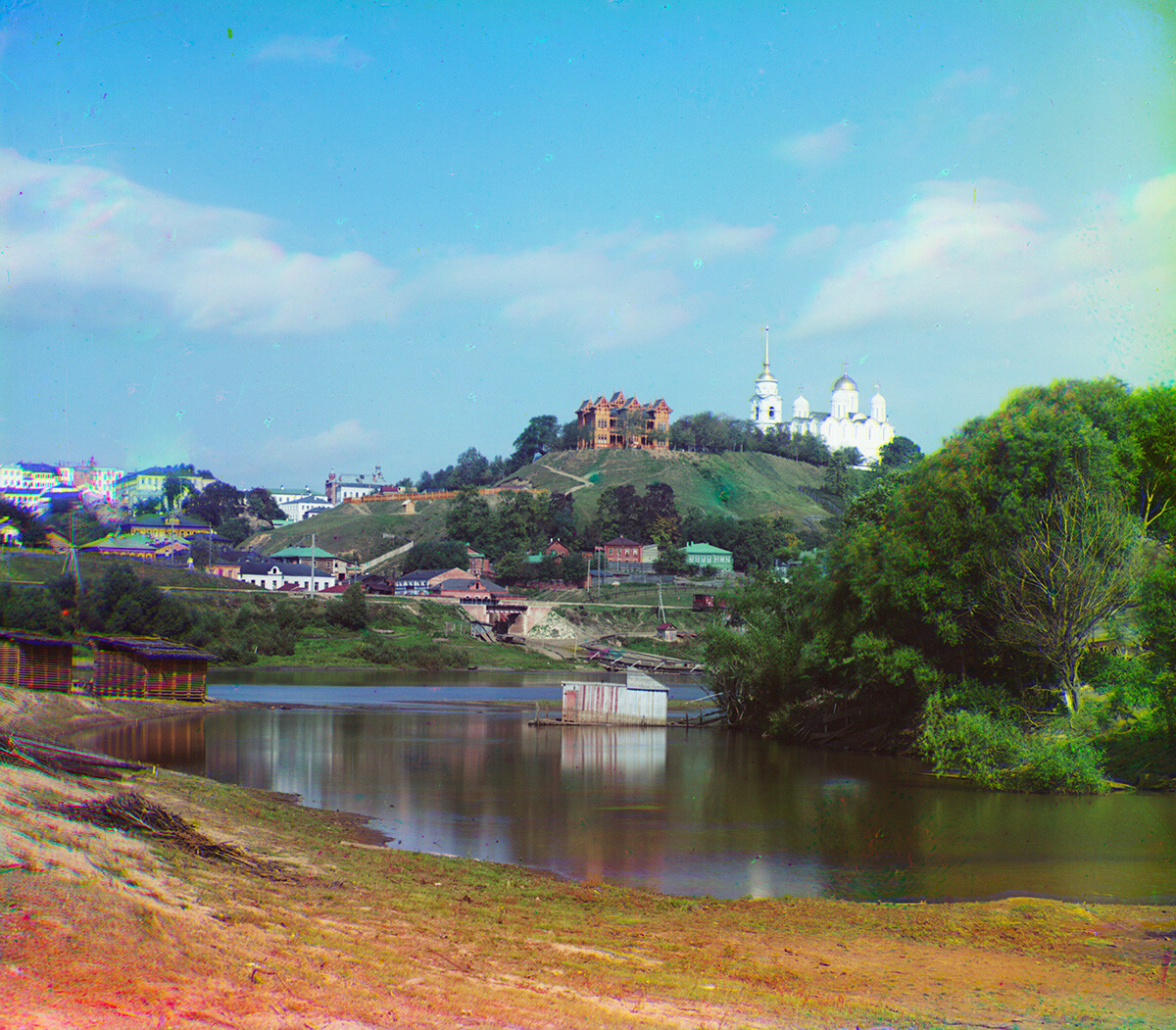
Vladimir. View toward north from right bank of Klyazma River. Upper right: Dormition Cathedral. Summer 1911
Sergey Prokudin-GorskyAmong Prokudin-Gorsky’s several views of Vladimir is a dramatic photograph with the Dormition Cathedral overlooking the steep left bank of the Klyazma River. The Klyazma eventually winds its way toward a confluence with the Oka River, a major tributary of the mighty Volga River.
On its way to the Volga, the Oka flows past the picturesque town of Murom, adorned with churches and monasteries on the river’s high left bank. Indeed, Murom is one of the easternmost towns in Vladimir Province. Across the river is the territory of Nizhny Novgorod.
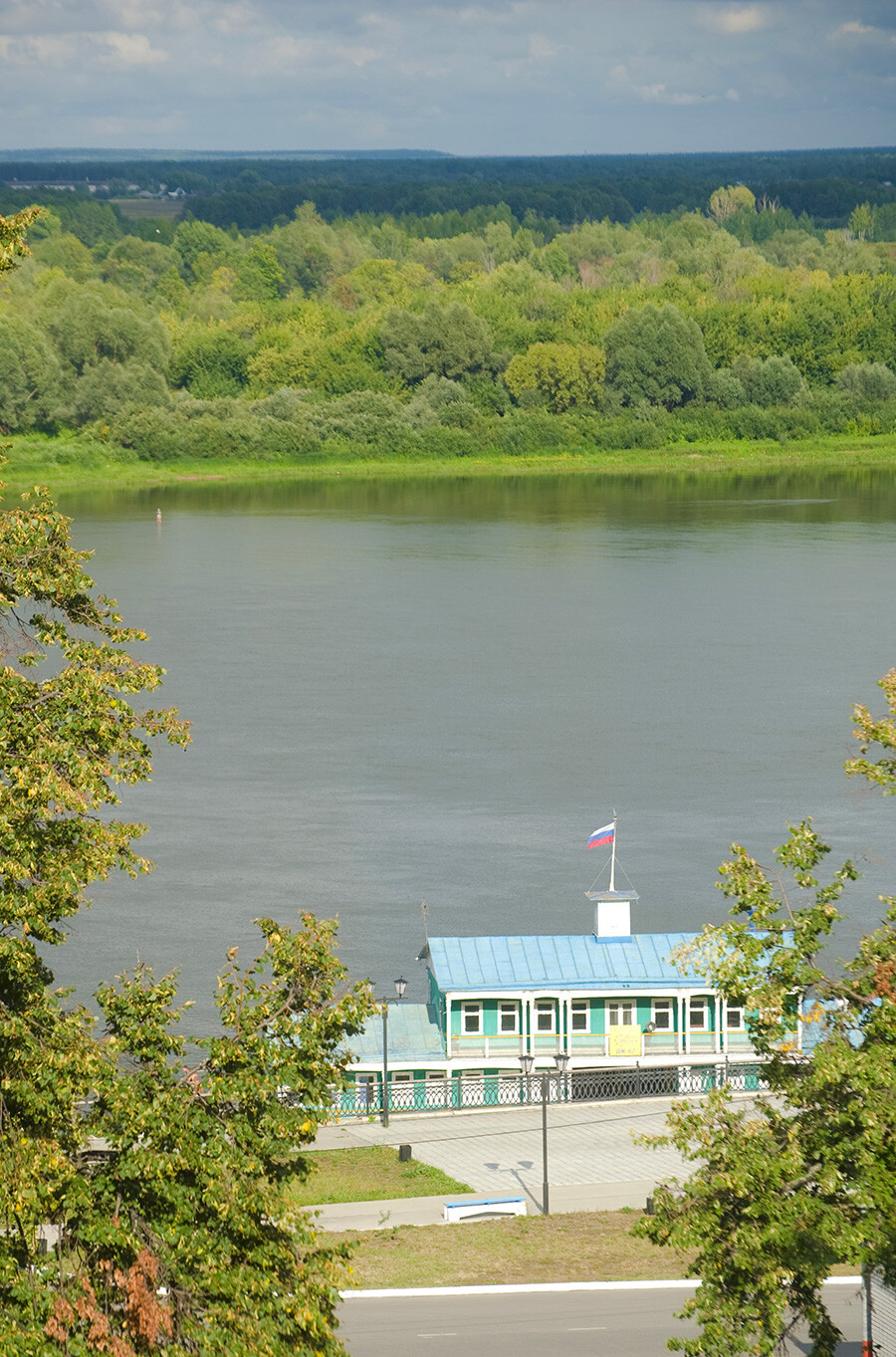
Murom. Oka River passenger station (typical floating wooden structure). August 16, 2012
William BrumfieldNamed after the Muroma, a Finno-Ugric tribe, ancient Murom has been overshadowed by other historic towns such as Suzdal and by industrial behemoths such as Nizhny Novgorod, located at the confluence of the Oka with the Volga.

Murom. Church of Sts. Kosma & Damian, west view. Background: Oka River. August 16, 2012
William BrumfieldMurom, however, has earned an enduring place in the Russian imagination as the abode of two of Russia’s most beloved saints, prince Peter and his wife Fevronia; and as the land of the legendary Russian hero, or bogatyr, Ilya Muromets (Elijah of Murom).

Murom. Savior Monastery. Gate Church of St. Cyril of Belozersk. Right: Chapel of Blessed Xenia of Petersburg. August 16, 2012
William BrumfieldBeing one of the oldest of Russian towns, Murom is mentioned in medieval chronicles under the year 862 as part of the domains of Riurik, the viking who is considered the founder of the first Russian dynasty. Thereafter, Murom repeatedly appears among the towns granted to Riurik’s descendants.
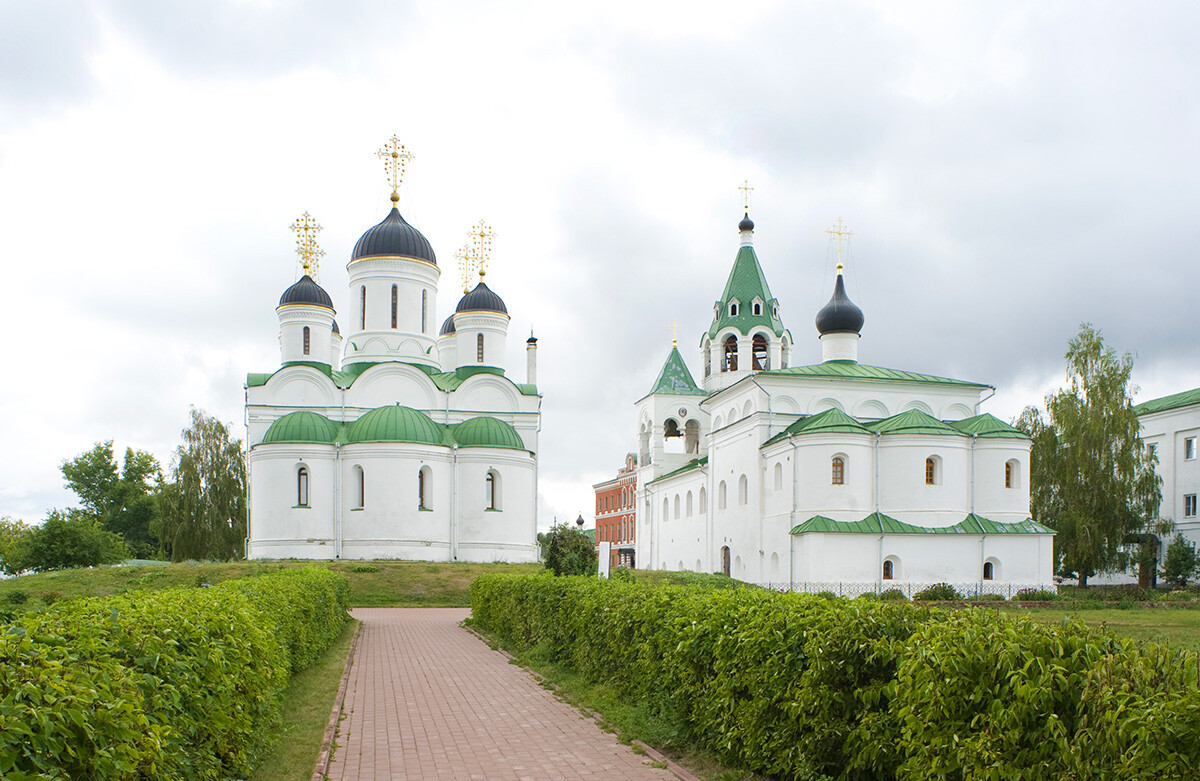
Savior Monastery. Transfiguration Cathedral (left) & Church of the Intercession, east view. August 16, 2012
William BrumfieldThese early princes include the pious Gleb (ca. 987-1015), one of the many sons of Grand Prince Vladimir of Kiev, who formally converted the Eastern Slavs to Christianity in 988. According to medieval accounts Gleb’s zealous Christian faith alienated his pagan subjects, who rejected conversion and expelled him to a fortified residence on the outskirts Murom.

Savior Monastery. Symbolic tomb with relics of St. Ilya Muromets, crypt of Transfiguration Cathedral, Savior Monastery. August 16, 2012
William BrumfieldAfter the death of Prince Vladimir in 1015, Gleb and his brother Boris were assassinated near Kiev in a fratricidal struggle for the throne. Refusing to engage in violence, Boris and Gleb were subsequently canonized by the Orthodox Church.
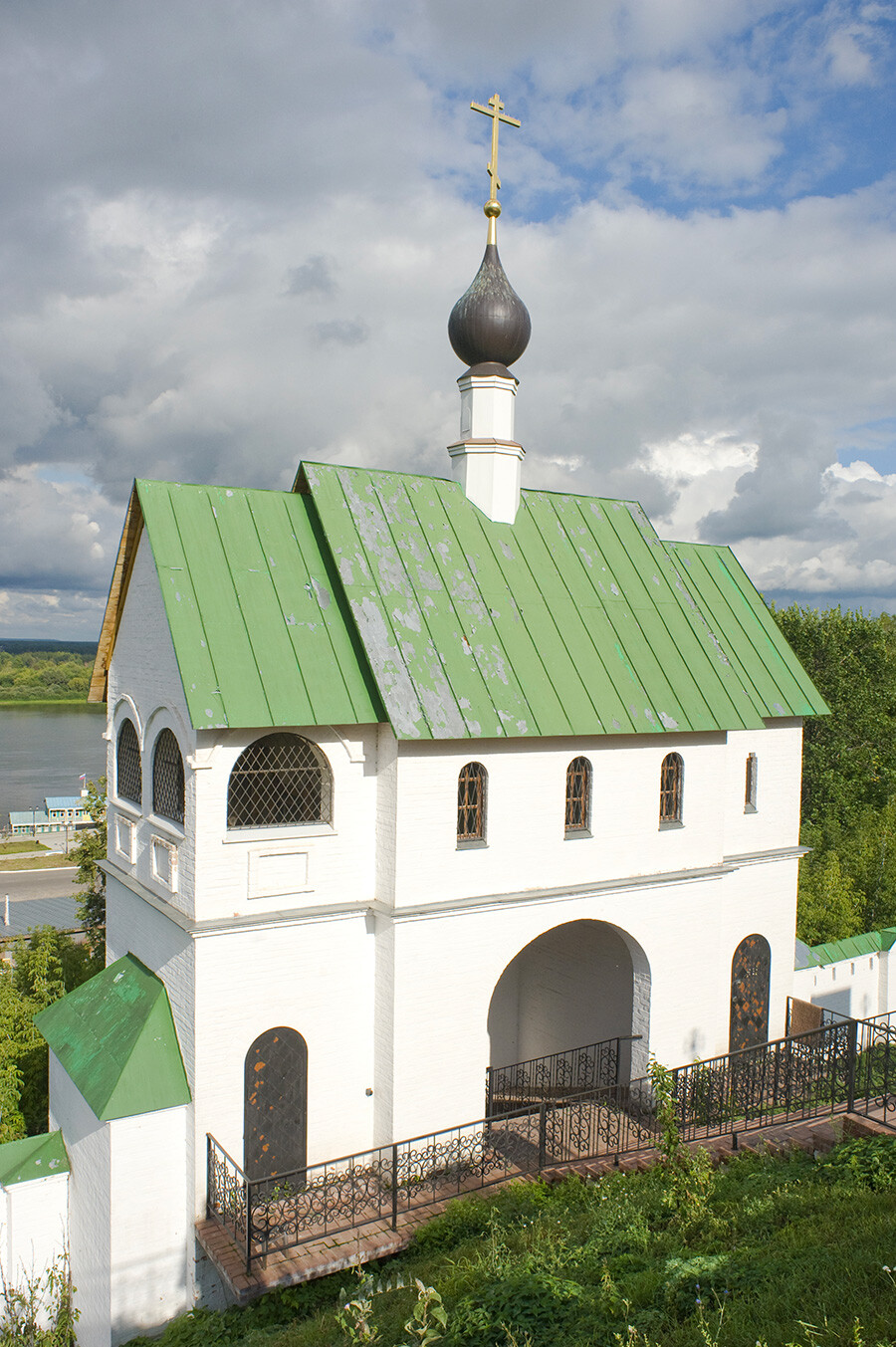
Savior Monastery. Church of St. Sergius of Radonezh over East Gate. Northwest view. August 16, 2012
William BrumfieldNever a major power center, Murom was passed among various princes in complex divisions of authority over the vast territory of medieval Rus’. By the end of the 11th century, prince Yaroslav, son of Svyatoslav of Chernigov, finally subdued local resistance to Christianity.
During the 13th century Murom was sacked by Tatar forces in 1239, 1281 and 1288. Feuding among local princes further weakened the town’s autonomy and, by the end of the 14th century, it entered the domains of the rapidly expanding Moscow principality.
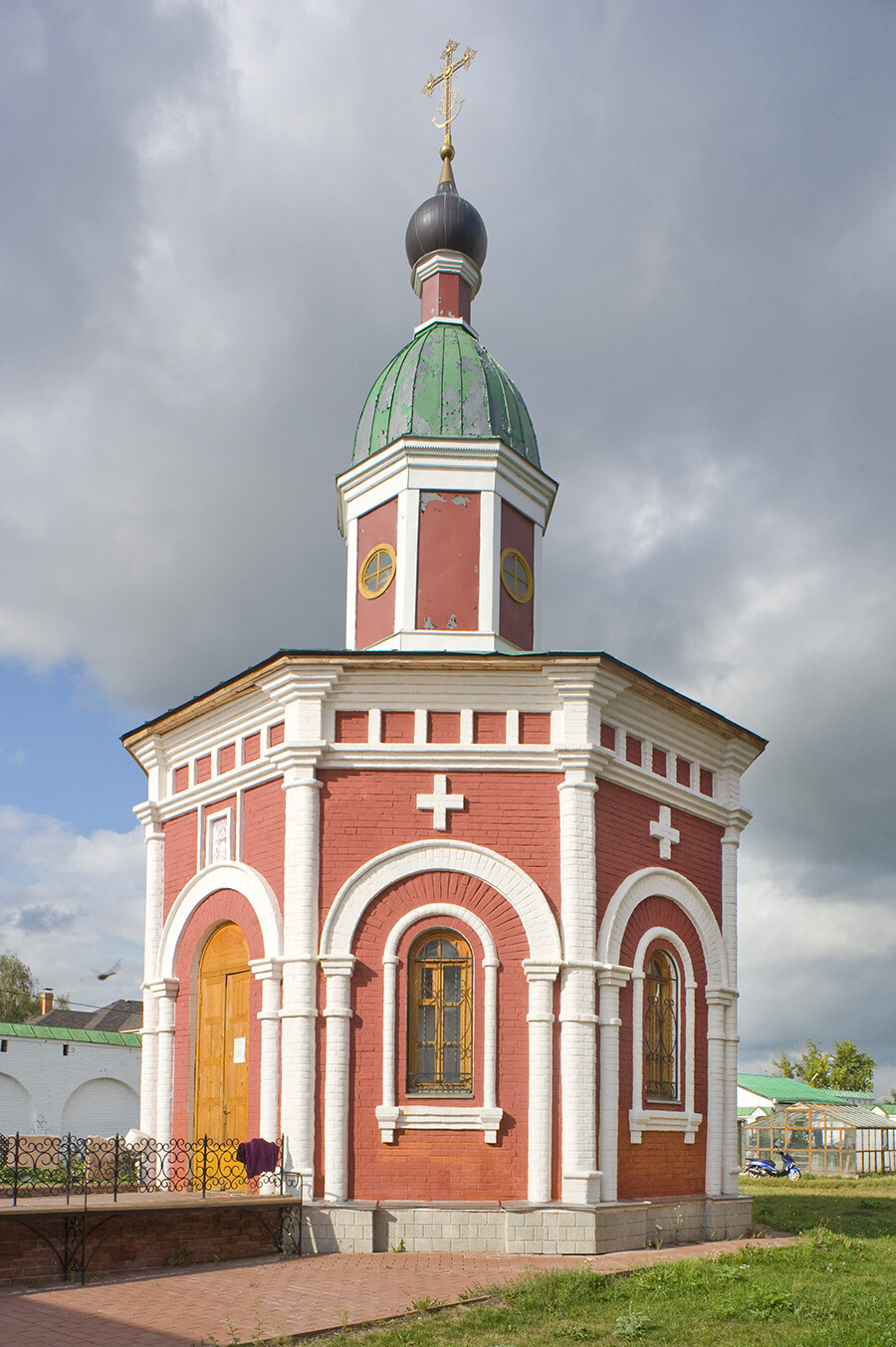
Savior Monastery. Chapel of Icon of the Virgin "Lifegiving Source," southwest view. August 16, 2012
William BrumfieldWith its advantageous location on the Oka River, Murom served as an important eastern outpost in the defense of Moscow against attacks from the Tatar state of Kazan. With the reign of Ivan the Terrible (1547-84), the town’s military importance dramatically increased in the early 1550s, when Ivan made preparations for the final attack on Kazan, in 1552.
In the decade after the conquest of the Tatar capital, Ivan had four brick churches built in Murom as a votive offering.
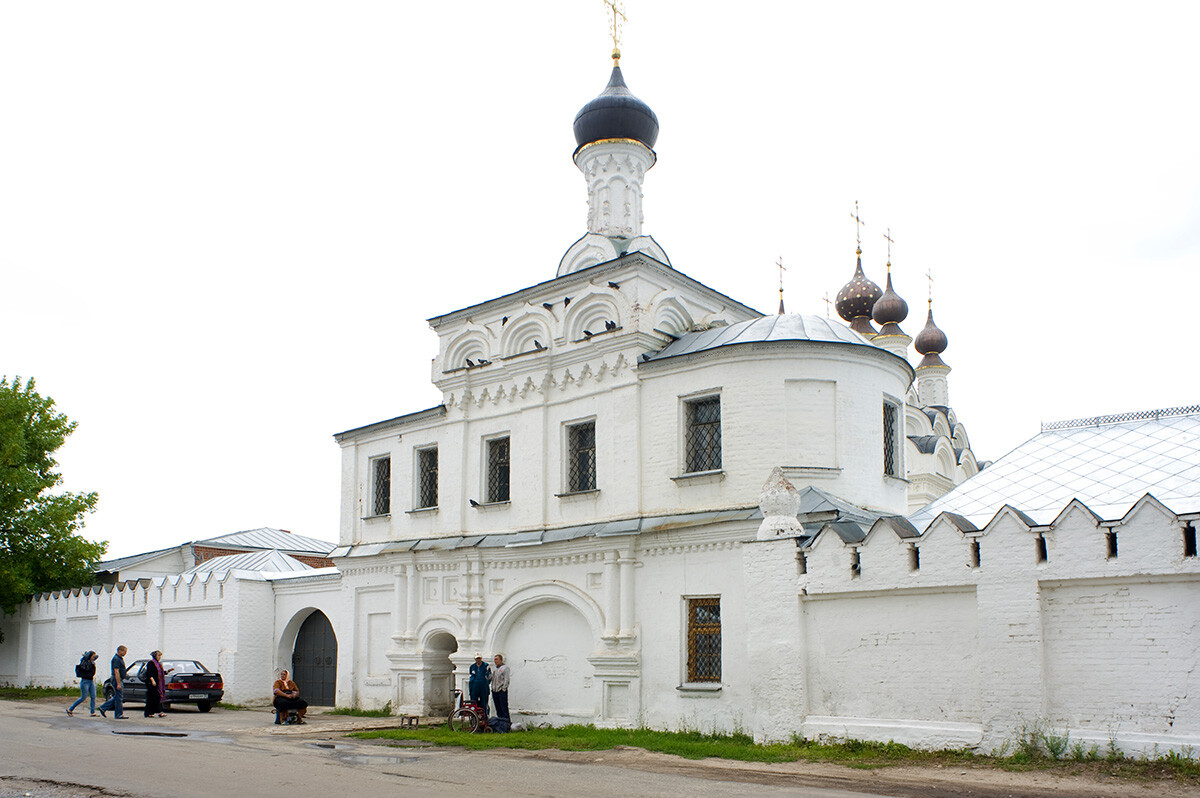
Annunciation Monastery. Gate Church of St. Stephen, southeast view. August 16, 2012
William BrumfieldOnly one of those churches still exists with basic elements of its original form: the compact Church of Saints Kosma and Demyan overlooking the Oka River. Its most distinctive feature, a soaring brick “tent” tower resembling that of St. Basil’s in Moscow, collapsed in 1868.
In 1901, the walls were covered with a low roof, which was surmounted in 2010 by a metal-sheathed conical roof, ornate in style, but much lower than the original.
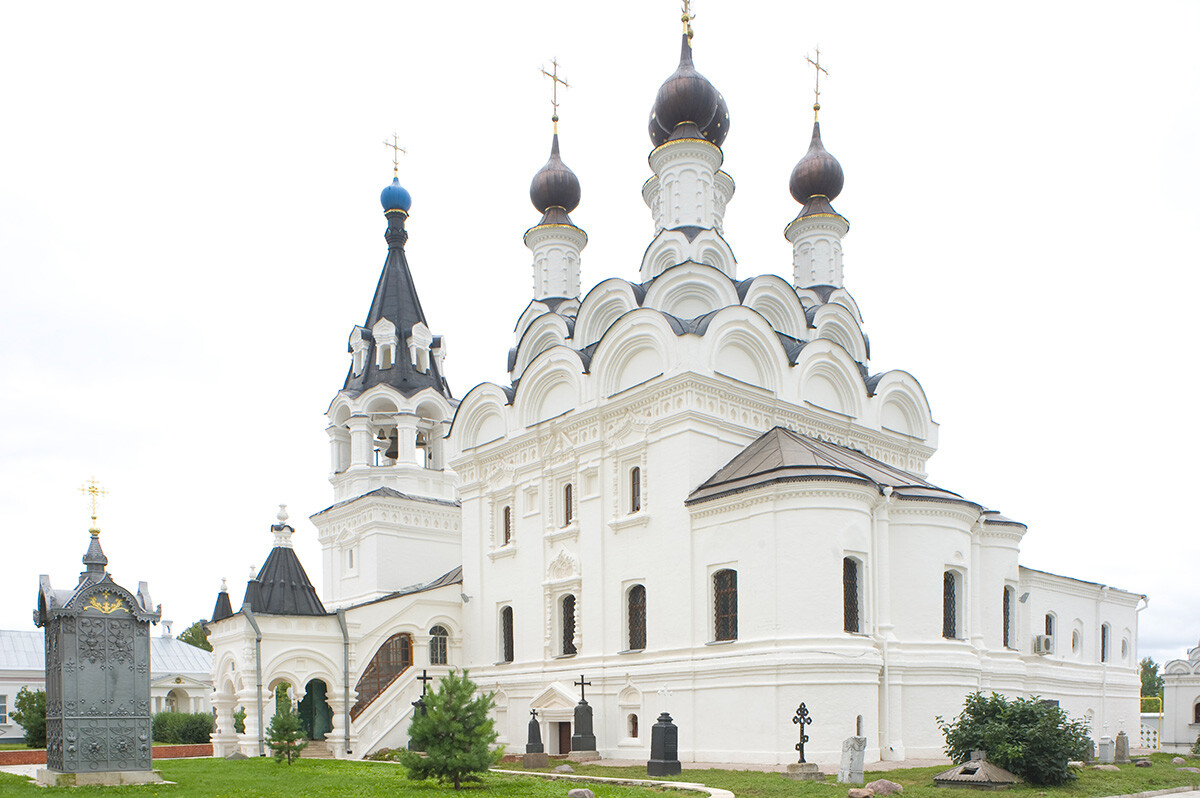
Annunciation Monastery. Annunciation Cathedral, southeast view. August 16, 2012
William BrumfieldFollowing the conquest of Kazan, Murom’s strategic role diminished, and the town became a provincial backwater with regional commercial significance. Yet, Murom remained a religious and pilgrimage center with a rich concentration of monastic institutions in the 17th and 18th centuries. After decades of neglect during the Soviet period, the monasteries and parish churches are being restored to impressive effect.
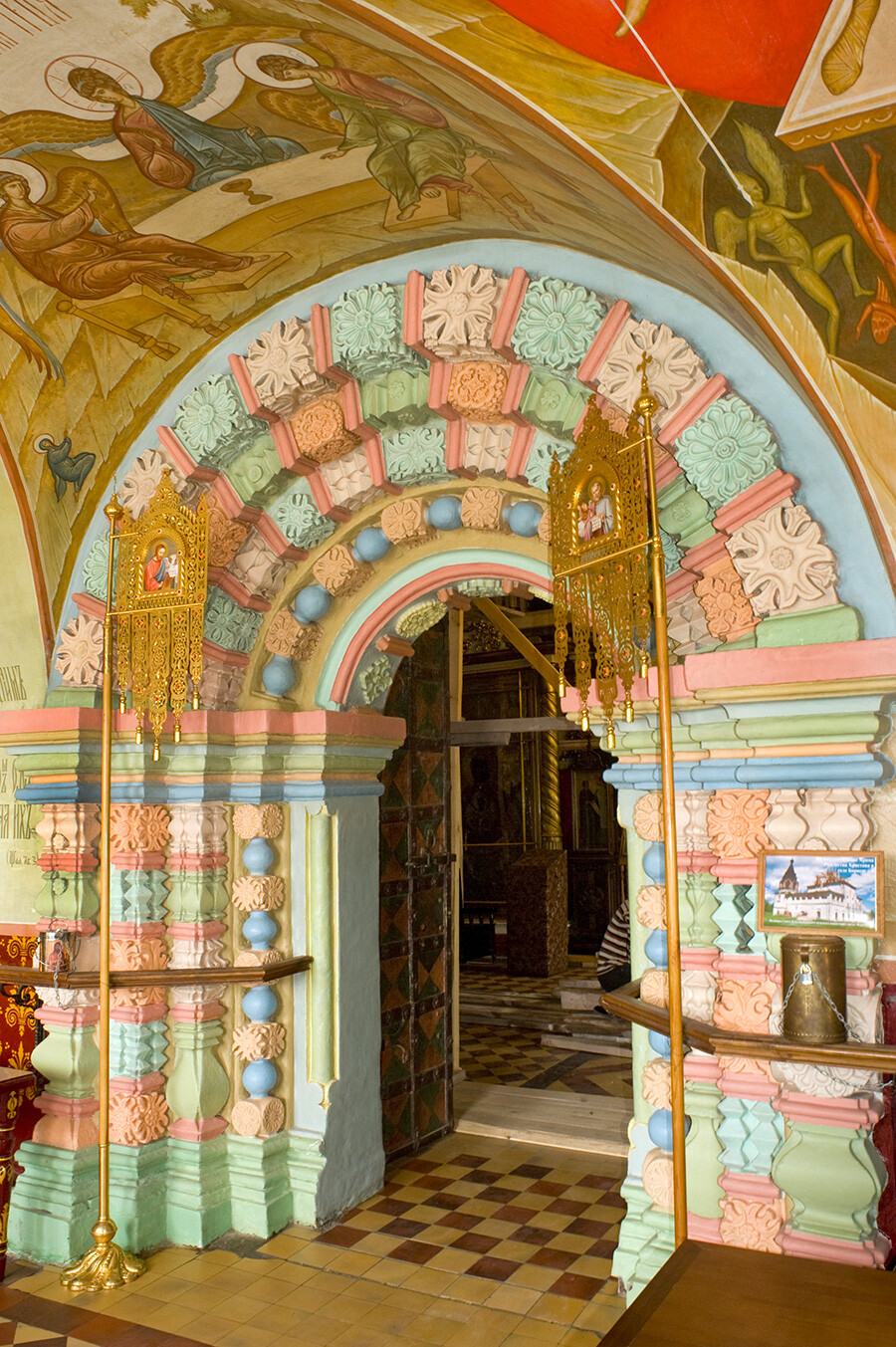
Annunciation Monastery. Annunciation Cathedral, west (main) portal. August 16, 2012
William BrumfieldThe most ancient of Murom’s monasteries is dedicated to the Transfiguration of the Savior and is situated to the south of town on a steep bank overlooking the Oka River. Legend has it that the monastery occupies the site of Prince Gleb’s fortified refuge. The earliest written reference dates from 1096, but its oldest structure – the Church of the Transfiguration – was built in the 1550s and has been substantially reconstructed.
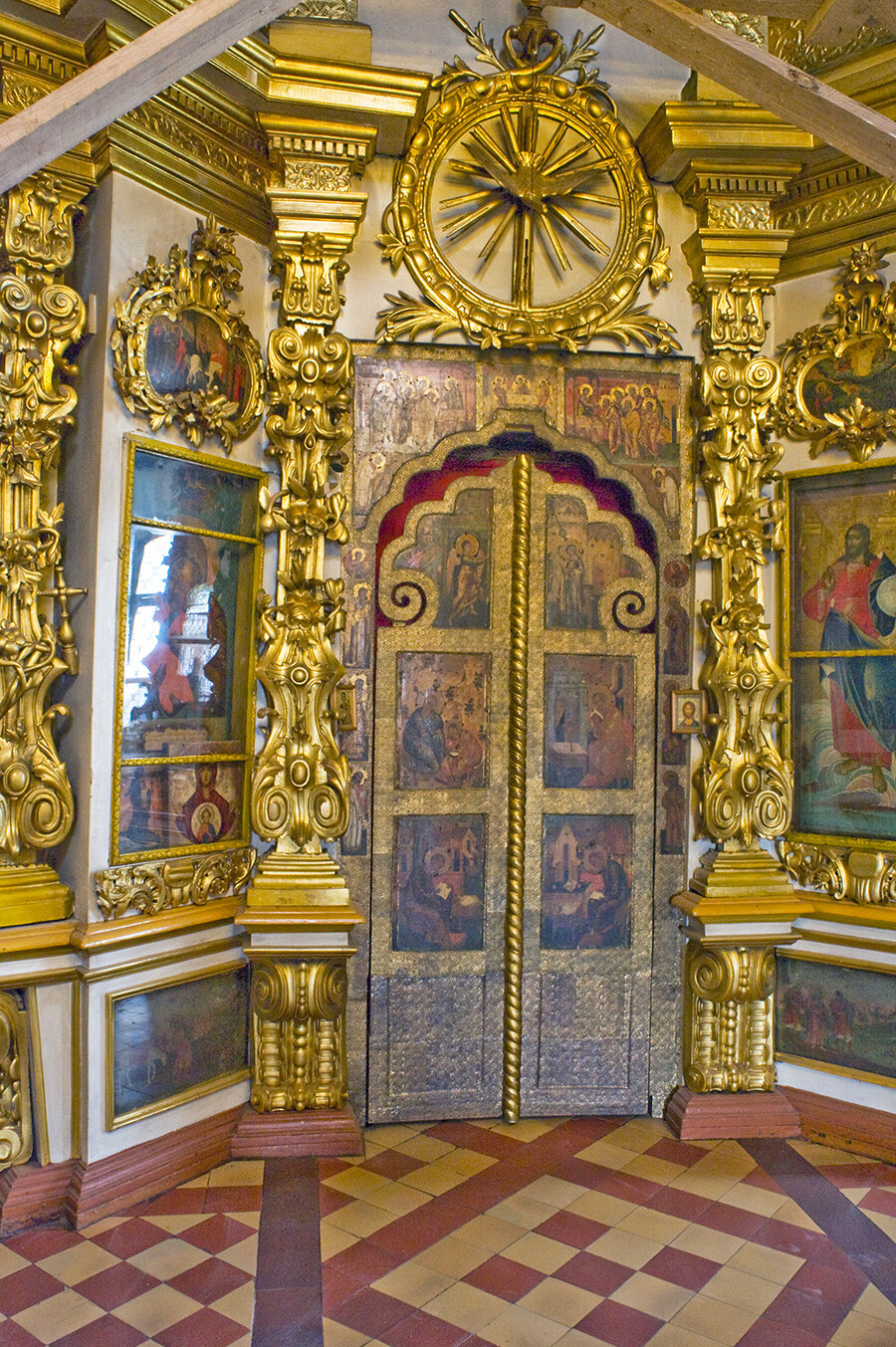
Annunciation Monastery. Annunciation Cathedral, Royal Gate of icon screen (entrance to main altar). August 16, 2012
William BrumfieldThe frescoes of the Transfiguration Church have been repainted, and the crypt contains a sarcophagus with relics of Ilya Muromets – who specialists believe was originally from a settlement near Kiev. Other churches, chapels and cloisters are spread around the spacious, park-like territory of the Transfiguration Monastery, which has become a major pilgrimage site.
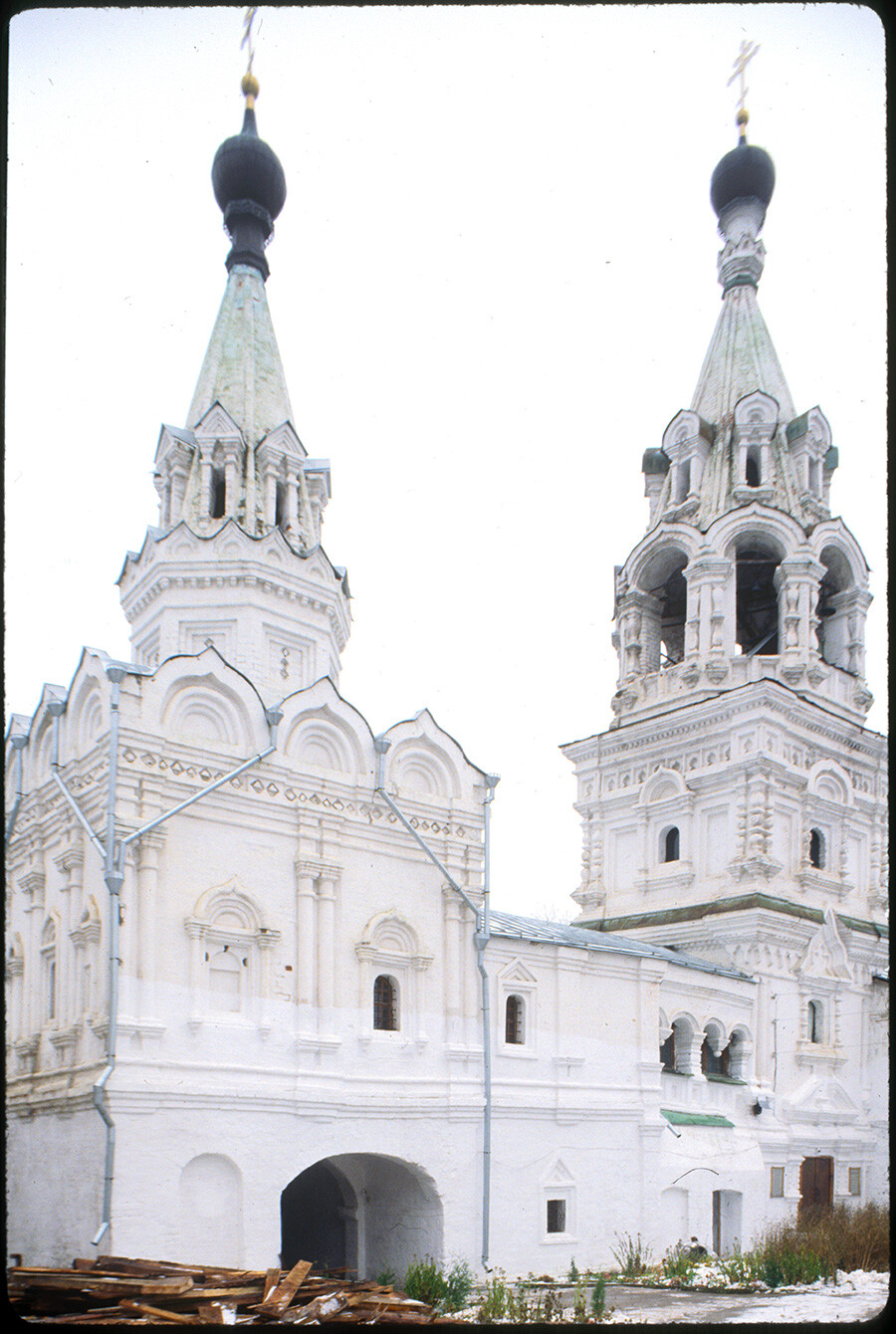
Trinity Convent. Bell tower & Church of Kazan Icon of the Virgin, southwest view. October 26, 2001
William BrumfieldThe center of Murom is graced with the ornate towers and churches of adjacent monastic institutions: the Monastery of the Annunciation and the Trinity Convent. The Annunciation Monastery was founded by Ivan the Terrible in 1553, but nothing has been preserved from that time.
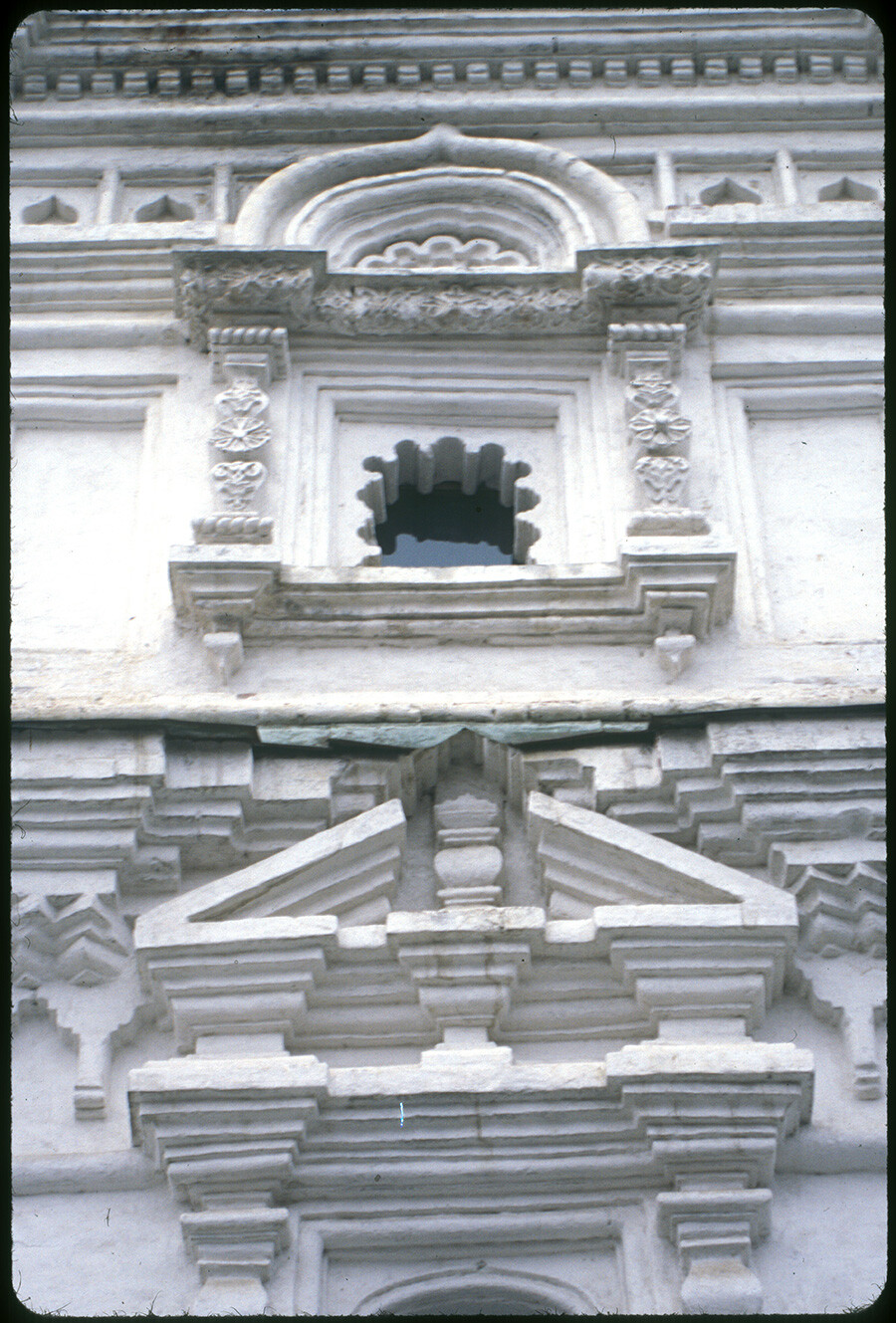
Trinity Convent. Bell tower, Church of Kazan Icon of the Virgin, south facade. Decorative window details. October 26, 2001
William BrumfieldThe monastery was destroyed in 1616 when Polish forces devastated Murom during the Time of Troubles. Its main Church of the Annunciation was lavishly rebuilt in the 1660s by the wealthy merchant Taras Borisov, known among the people as Bogdan Tsvetnoy (‘the colorful’).

Trinity Convent. Trinity Cathedral, northwest view. August 16, 2012
William BrumfieldIn the 1640s, the same merchant endowed the nearby Trinity Convent, whose ornate Church of the Holy Trinity is decorated with ceramic tiles.
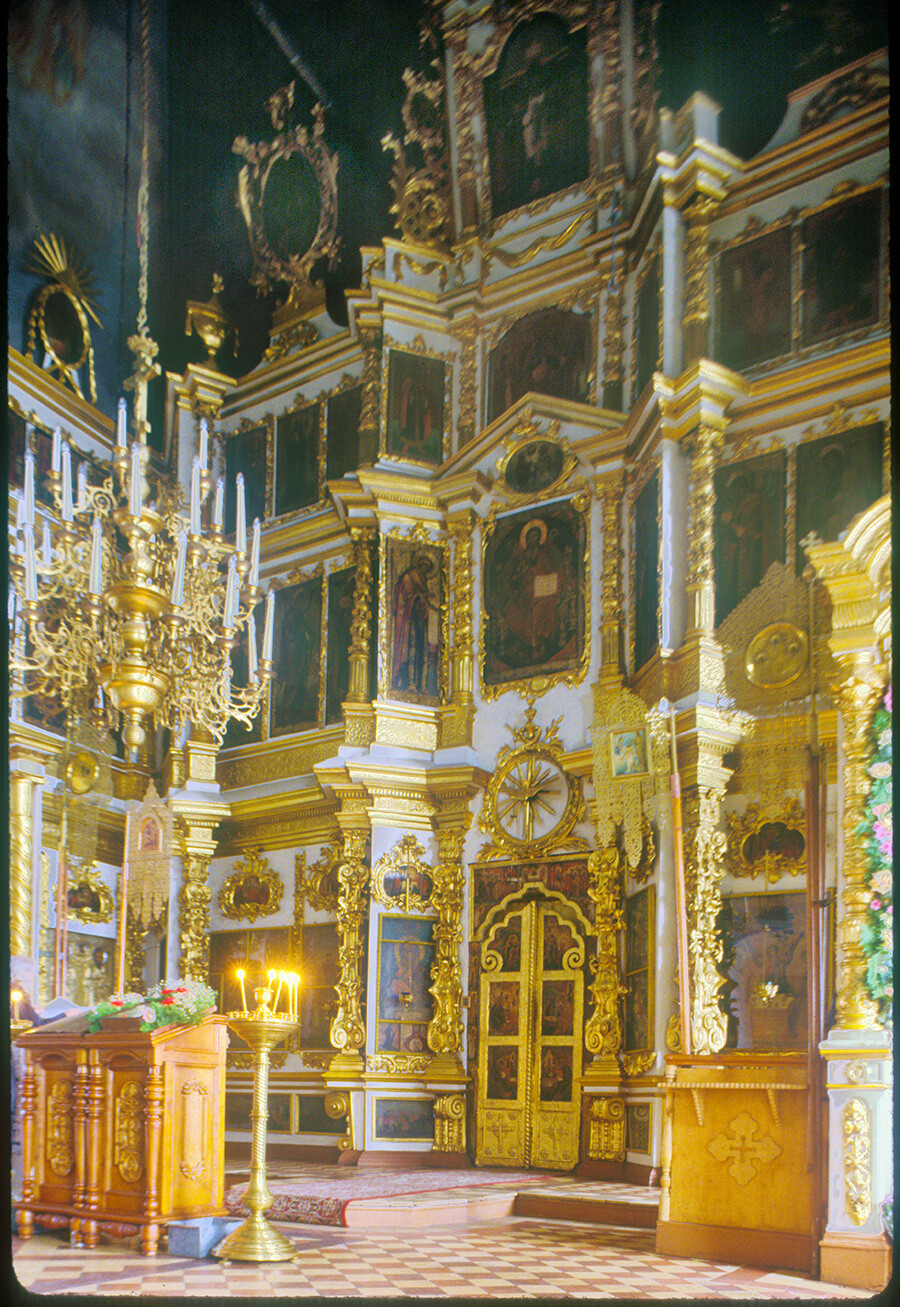
Trinity Convent. Trinity Cathedral, icon screen. October 26, 2001
William BrumfieldIts interior contains the relics of Saints Peter and Fevronia, canonized in 1547 and revered as examples of conjugal fidelity. Although their precise historical identity is subject to question, the 16th-century account of their life together is known by every student of medieval Russian literature.
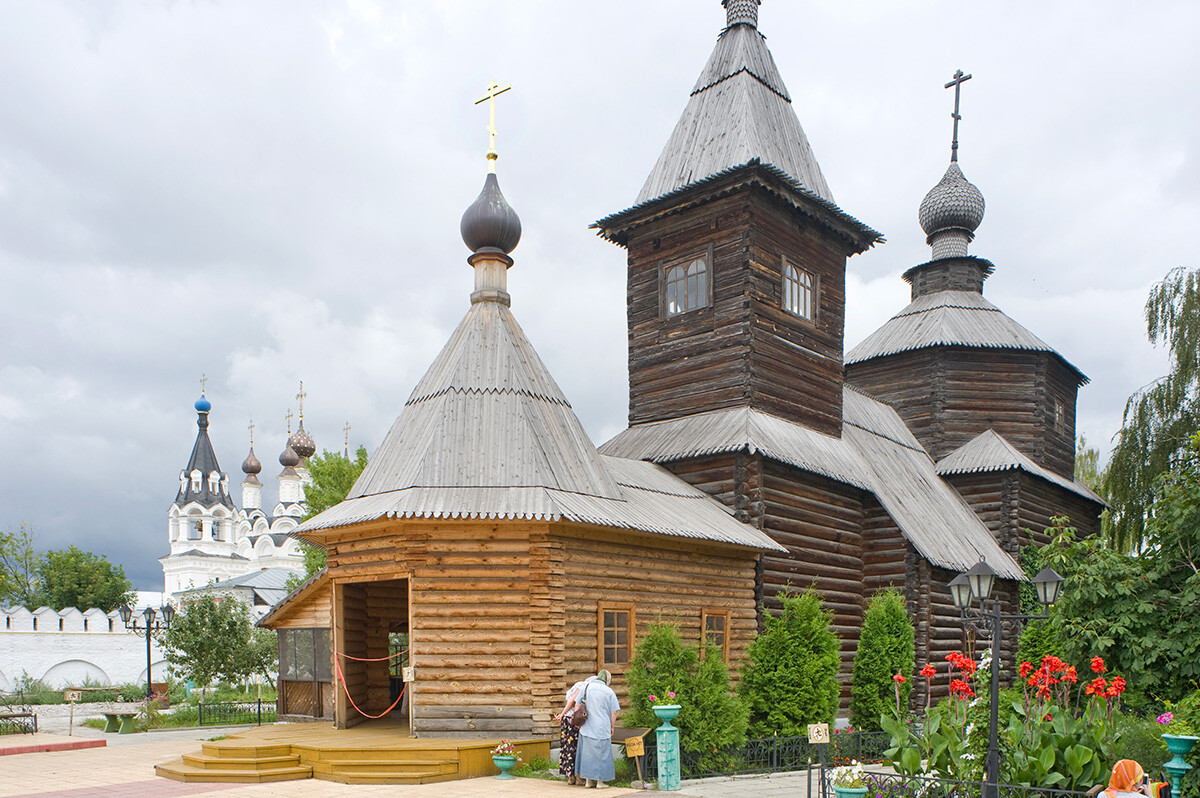
Trinity Convent. Log Church of St. Sergius of Radonezh, southwest view. Built in early 18th century, moved from village of Krasnoye to convent in 1970s. August 16, 2012
William BrumfieldThe north part of Murom is graced by the Convent of the Resurrection, whose 17th-century churches are now being restored. Like the Transfiguration Monastery at the other end of Murom, the Resurrection Convent has a sweeping high view of the Oka River.
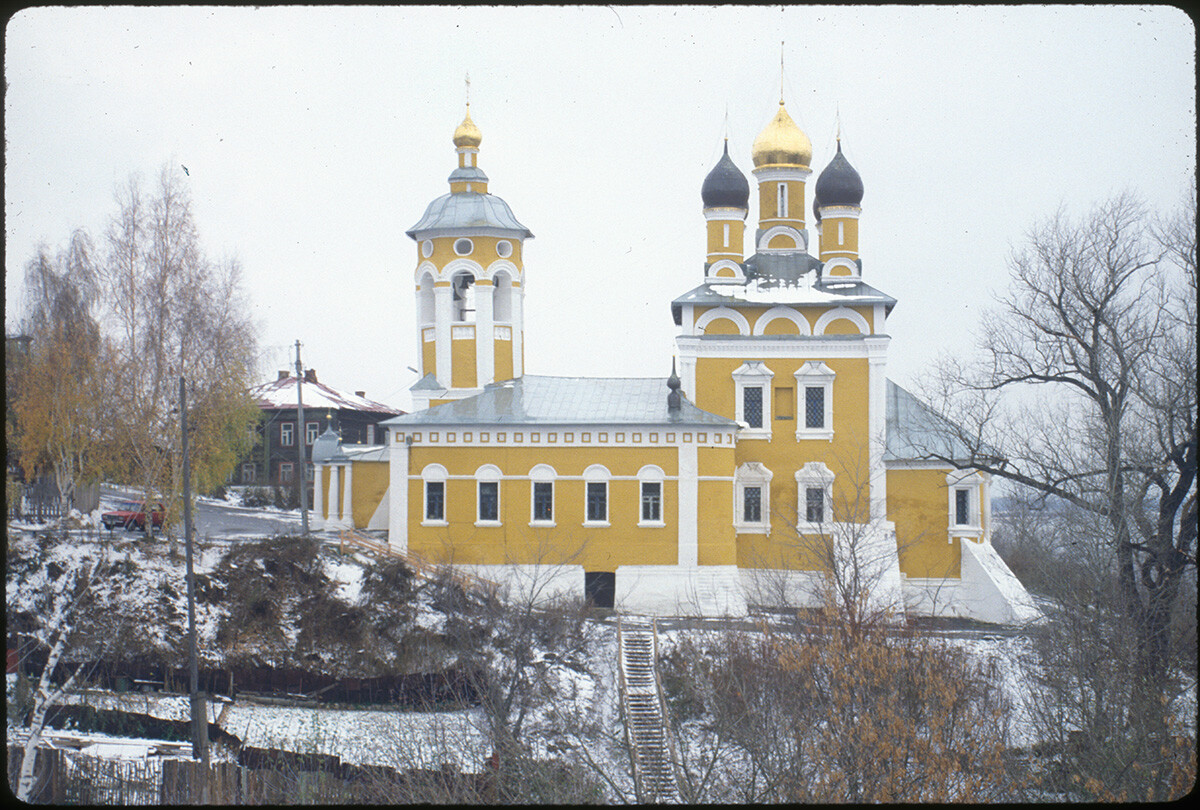
Church of St. Nicholas on the Embankment, south view. October 26, 2001
William BrumfieldMurom still has a few early 19th-century stuccoed brick mansions built in a neoclassical style. Major fires destroyed the largely wooden urban environment in 1805 and the town was rebuilt to a geometric plan formulated during the reign of Catherine the Great.

Murom. 19th-century brick house, First of May Street. August 16, 2012
William BrumfieldMurom also has neighborhoods with wooden houses from the late 19th and early 20th centuries, with their distinctive ornate window frames and decorative cornices. In some cases, the wooden structure rests on a brick ground floor.
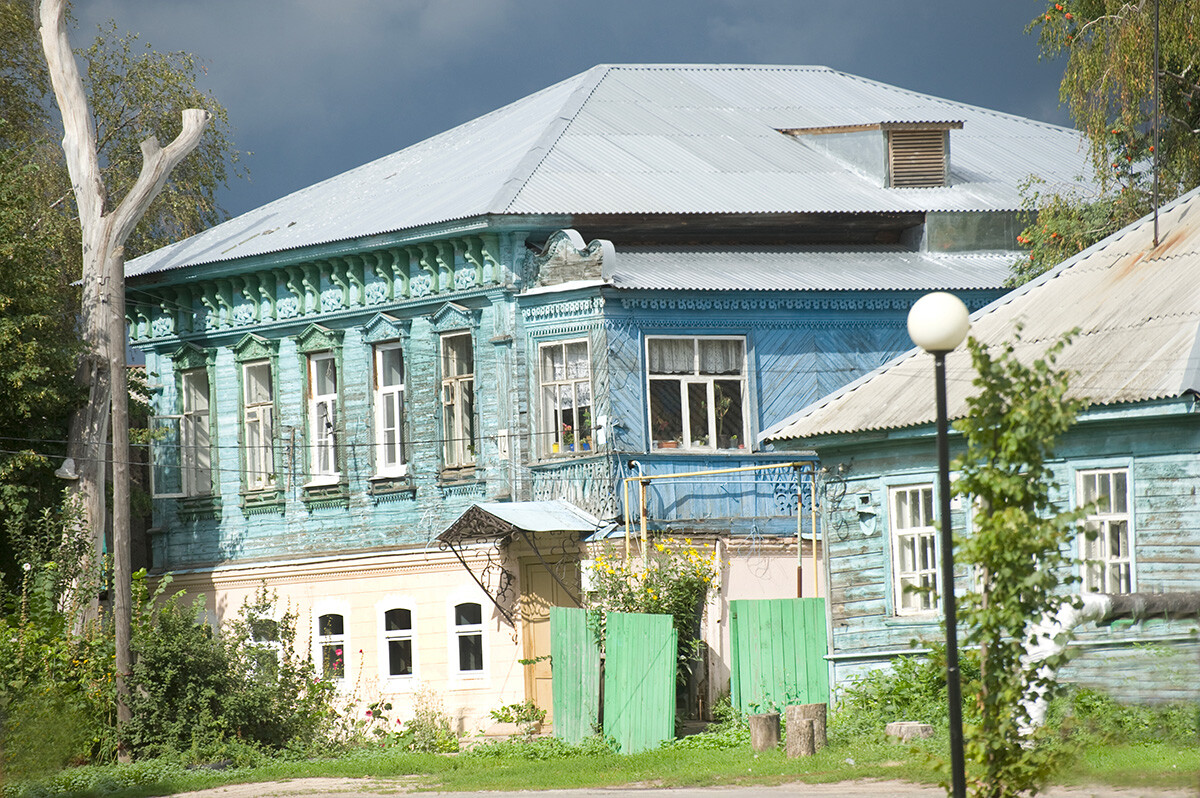
Murom. 19th-century wooden house on brick ground floor, Temiryazev Street. August 16, 2012
William BrumfieldBy the turn of the 20th century, Murom had become a railway center with important textile factories. The town has seen its share of economic difficulties in recent decades, with a population decline to a current level of around 107,000.
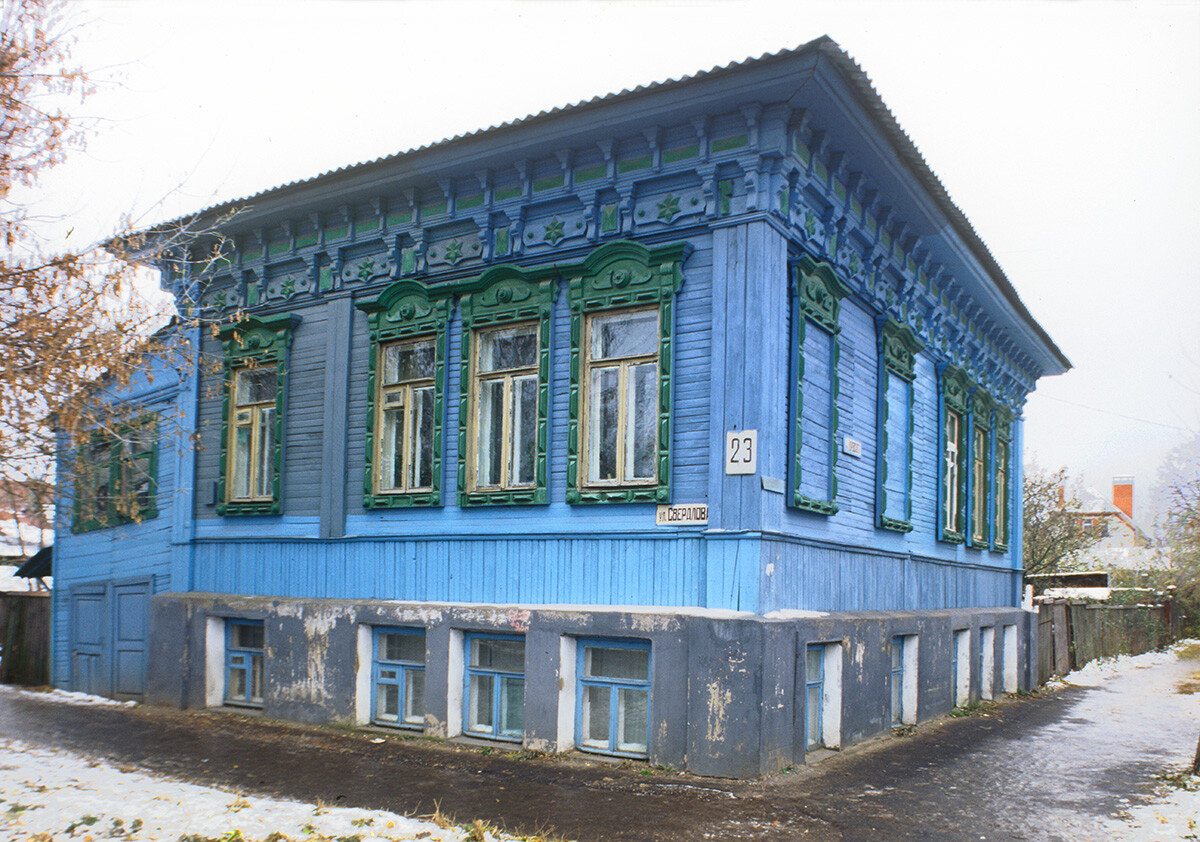
Murom. 19th-century wooden house on Sverdlovsk Street. October 27, 2001
William BrumfieldAlthough parts of central Murom were rebuilt during the Soviet period, numerous pre-revolutionary buildings still stand, and they provide the town center with an attractive human scale.
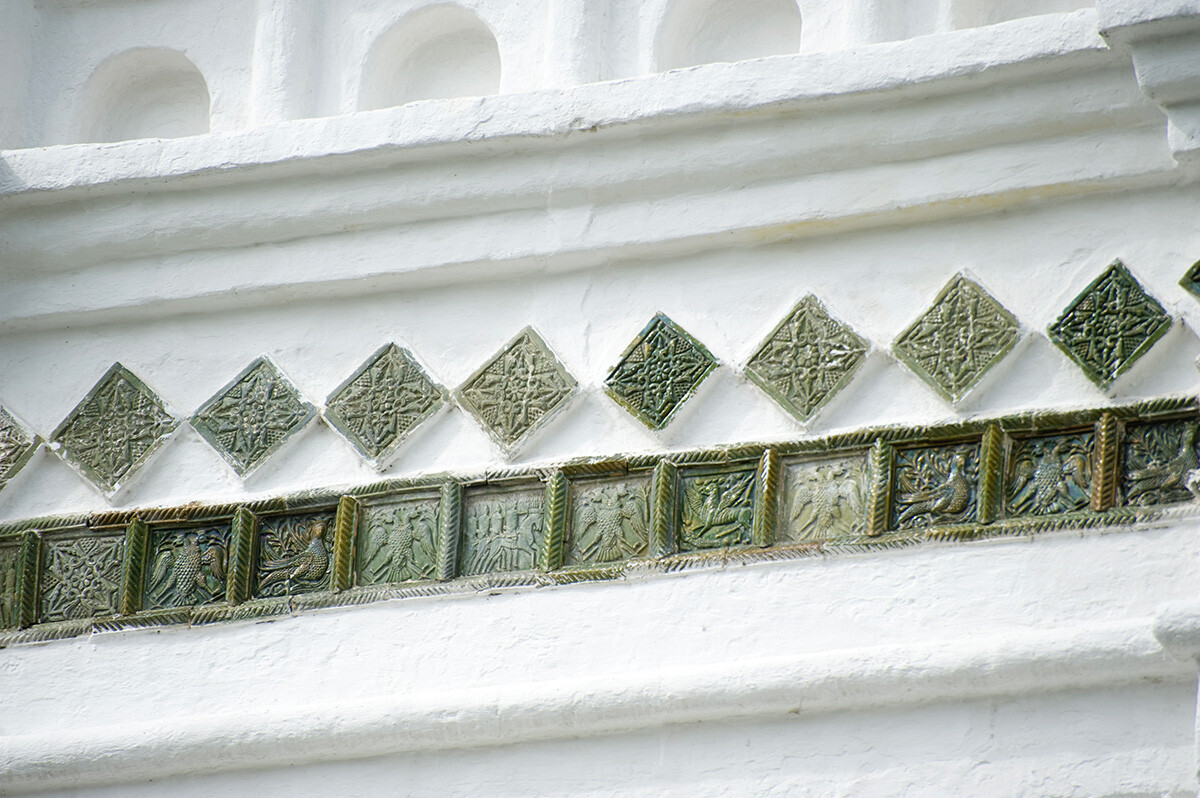
Trinity Convent. Trinity Cathedral, south façade, ceramic tile decoration. August 16, 2012
William BrumfieldIn the early 20th century, Russian photographer Sergey Prokudin-Gorsky developed a complex process for color photography. Between 1903 and 1916, he traveled through the Russian Empire and took over 2,000 photographs with the process, which involved three exposures on a glass plate. In August 1918, he left Russia and ultimately resettled in France, where he was reunited with a large part of his collection of glass negatives, as well as 13 albums of contact prints. After his death in Paris in 1944, his heirs sold the collection to the Library of Congress. In the early 21st century, the Library digitized the Prokudin-Gorsky Collection and made it freely available to the global public. A few Russian websites now have versions of the collection. In 1986, architectural historian and photographer William Brumfield organized the first exhibit of Prokudin-Gorsky photographs at the Library of Congress. Over a period of work in Russia, beginning in 1970, Brumfield has photographed most of the sites visited by Prokudin-Gorsky. This series of articles juxtaposes Prokudin-Gorsky’s views of architectural monuments with photographs taken by Brumfield decades later.
If using any of Russia Beyond's content, partly or in full, always provide an active hyperlink to the original material.
Subscribe
to our newsletter!
Get the week's best stories straight to your inbox